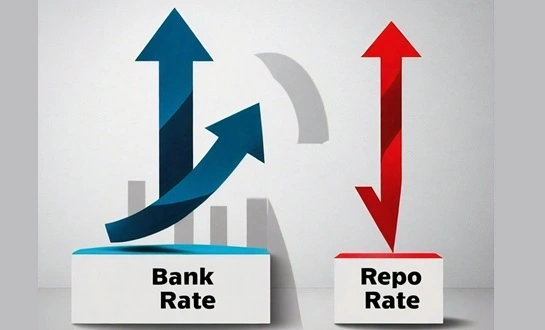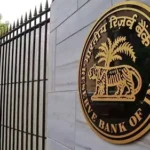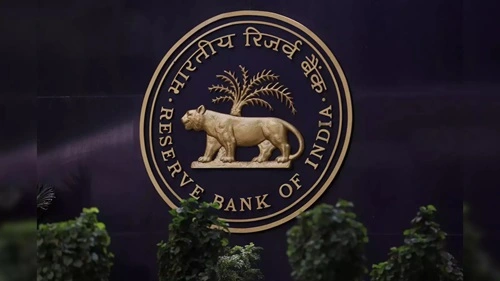If you follow the headlines and what’s happening in the financial scene of the nation, then you may have heard of bank rates as well as repo rates in relation to inflation and economic activities, right? But, the thing is, most people don’t even know the true difference between these two types of rates and what the role of these rates is in a nation’s economy. So, for that very reason, let’s get to know the difference between bank rate and report rate in today’s post. Alright, here we go.

Overview Of Bank Rate and Repo Rate And Why They Matter
First of all, let’s have a look at the Bank Rate, also referred to as the discount rate. You see, the Reserve Bank of India (RBI), which is India’s central bank, gives a lot of cash to banks in the country at this rate. What does this affect though? It’s a standard way to keep inflation in check and keep the value of the currency from going up and down way too quickly. It also sets the tone for other loan rates in the economy. If the central bank raises this rate, it’s like telling people “Let’s not spend as much.” This makes loans more expensive and slows down inflation. On the other hand, lowering the Bank Rate makes it cheaper to borrow money. This encourages banks, companies, and people like you and me to borrow and spend more, which is good for the economy overall.
And what exactly is Repo Rate then? Well, it is also known as the buyback or repurchase rate. With this one though, only deals that last a short time are included. For short periods of time, private banks can draw money from the central bank at this rate, using government securities as collateral. The Repo Rate is what banks do when they need cash quickly to handle day-to-day tasks. It’s important for keeping the banking system alive and well. More money is pumped into the system when the central bank lowers the Repo Rate. When it’s time to loosen the reins, however, the rate goes up to help soak up any extra cash that might be lying around.
These are the two important rates that the central bank uses to keep the economy going: one to control inflation and the other to boost growth. So next time you hear about any of these rates in the headlines or anywhere else, you’ll know precisely what they mean and what impact they can have.
Key Differences Between Bank Rate and Repo Rate
1. Collateral Requirement
Are you aware that the Bank Rate and the Repo Rate are two very different things, even though they are both important for monetary policy? Here are the things you see, first of all, with the Bank Rate, banks don’t have to put up any collateral when they receive money from the central bank. It’s generally for a long time, to help banks and other financial institutions meet their long-term money needs. Meanwhile, the Repo Rate stays safe. Banks need to put up government bonds as collateral. This gives the central bank something to hold on to, which makes it a useful tool for short-term cash flow management, you know?
2. Duration of Loans
When we are talking about the loans here, we must mention the tenure of the loan, right? Or else, you won’t get the full picture. Lending from a bank? Since they last for years or months, they’re like races that can change the big picture of the economy over time. But loans with Repo Rates? They’re more like racing. Repo rate is super important in order to deal with pressing cash flow problems and keep the banking system stable in the short term, we’re talking about overnight or no more than a few days.
3. Impact on Borrowing Costs
It gets interesting for your wallet now. There are changes to the rates that banks charge us when the Bank Rate is changed. We pay more for loans when the Bank Rate goes up because banks pass on their higher costs to us. Bringing down the Repo Rate, though? That’s a great deal for banks because they can borrow money from the central bank for very little cost, which can lead to lower interest rates on the short-term loans they give us, which will increase spending and encourage investment in the nation.
4. Frequency of Change
And on what frequency do these rates vary? Well, the Bank Rate is actually the slower one here, which changes accordingly since it relates to the overall monetary policies based on long-term economic indicators including inflation and growth. On the other hand though, often changed to match daily market liquidity levels, the Repo Rate is the mechanism that enables the central bank to dynamically control the ups and downs of the financial system.
5. Use in Inflation Control
Turning now to inflation management, another field where these rates show their true meaning. More like a slow burn, the Bank Rate indirectly affects inflation by changing long-term interest rates and general economic activity throughout the nation. It’s a means for the central bank to control the amount of money floating about, so influencing inflation. The Repo Rate? Well, this one is actually a direct and quick impact on short-term rates and inflation expectations, letting the central bank quickly control the cash flow of the economy and maintain control of inflation.
6. Effect on Currency and Bond Markets
Last but not least, let’s look at how these rates affect the stock and currency markets. It might be a little surprising for you but, you see, these rate changes at the Bank of England can affect long-term bond prices and even exchange rates, but the effects happen slowly over time. As for the Repo Rate, changes to it had an immediate effect on short-term bond rates and the money markets. This showed how important it is for managing short-term liquidity and keeping the financial waters calm.
Final Thoughts
As you saw, both the bank rate as well as repo rate are super important tools for banks and financial institutions to have good control over inflation and economic activities. And we truly hope that from now on, you won’t be confused about what these rates mean and what their true impact is.



















